By BeSund Editorial Team 11/07/2023 Modified Date: 03/05/2024
Ageing
Uncover the role of exercise in the ageing process
Ageing and Exercise
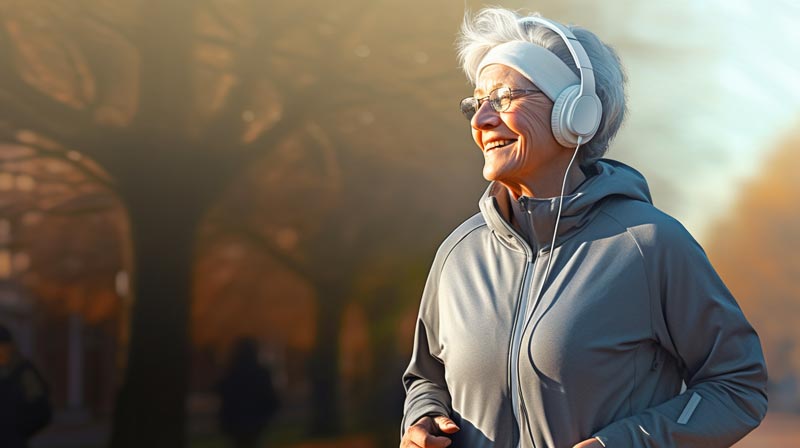
Understanding Ageing and Exercise
Ageing is a natural part of life. As we age, our bodies undergo various physical and physiological changes. One of the significant changes with ageing is a reduction in muscle mass and function, a condition known as sarcopenia. This muscle loss can decrease strength, balance, and mobility, leading to a decline in our ability to perform daily tasks and maintain an active lifestyle. However, physical activity plays a pivotal role in combating these age-related changes in ageing and exercise. It is recommended that adults undertake a balanced mix of aerobic and muscular fitness activities. These activities can improve overall health and well-being and mitigate the impacts of ageing. Aerobic activities, such as brisk walking, swimming or jogging, are excellent for improving cardiovascular health and enhancing the body’s ability to utilise oxygen. For substantial health benefits, published data shows that engaging in moderate-intensity aerobic activity for at least 150 minutes per week or vigorous-intensity activity for a minimum of 75 minutes per week can help to reduce the negative impact of ageing on the body. Muscular fitness is equally important as we age. It includes aspects such as muscular strength, endurance, and power. Resistance training, which helps improve muscular fitness, is recommended at least two to three times per week. Regular resistance training can help counteract sarcopenia and improve functional abilities. Allowing older adults to maintain independence and enjoy a better quality of life. Understanding the relationship between ageing and exercise is vital. While ageing may change our physical and physiological capabilities, a well-structured and balanced exercise routine can help manage these changes and promote healthy ageing. 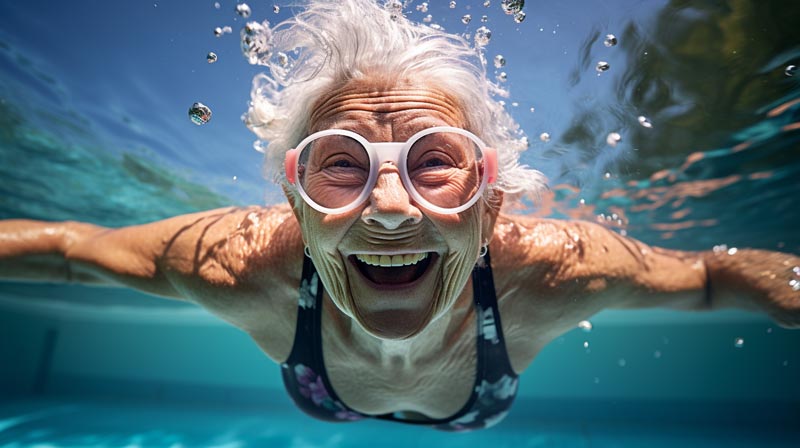
The Impact of Ageing on Physical Performance
Ageing is an inevitable physiological process that impacts various aspects of physical performance. These changes occur gradually and can affect a person’s ability to maintain an active lifestyle and perform daily tasks. Here, we will discuss some critical physiological changes that occur with ageing and how they impact physical performance:
- Muscle Mass: The loss of muscle mass is a prominent factor contributing to a decline in physical performance in the elderly. As muscle mass decreases, individuals experience a drop in strength, balance, and mobility, affecting their ability to perform daily activities.
- Cardiovascular Function: Ageing also affects an individual’s aerobic capacity and overall physical performance. Age-related cardiovascular changes such as reduced maximal heart rate, decreased cardiac output, and a diminished capacity for oxygen uptake can limit one’s ability to perform sustained physical activities.
- Body Composition: Additionally, changes in body composition occur with age, characterised by an increase in body fat and a decrease in lean body mass. This shift can further contribute to a decline in physical performance. However, regular physical activity can help manage these changes and promote health.
When you consider ageing and exercise, while ageing may bring about changes in physical capabilities, a balanced exercise routine can help manage these changes and promote healthy ageing. Such an exercise programme should be tailored to each individual ability, considering current strength, weight-bearing stability status, and experience with resistance training to minimise potential injuries. It’s worth noting that approximately 81% of individuals between the ages of 57 and 85 use at least one prescription medication. This has the potential to alter the expected physiological response to exercise. Understanding the drugs and potential adverse reactions associated with these medications is crucial to your physical needs and when undertaking training as an older adult. 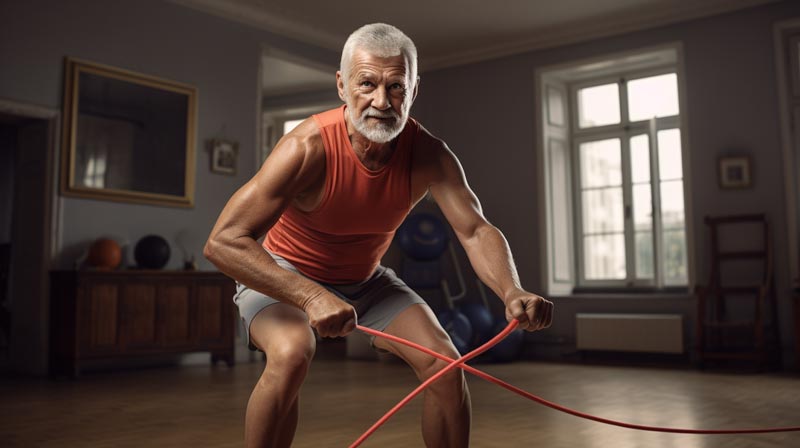
Exercise as a Management Tool for Ageing and Exercise
Ageing and exercise are two intertwined aspects of health and well-being. Exercise has been recognised as a powerful tool to manage the natural process of ageing, particularly the physiological changes that negatively impact health and quality of life. As we age, our bodies may become more rigid. This rigidity can lead to a domino effect. It can cause the atrophy and deterioration of our connective tissues. These tissues are the scaffolding of our body. When they deteriorate, the ageing process accelerates. Exercise and fitness can counteract these effects. They are often called the ‘Fountain of Youth’. Regular physical activity slows down the ageing process. In some cases, it can even reverse it. Looking at the relationship between ageing and exercise. It’s important to note that our body’s ability to retain water and concentrate urine becomes impaired due to decreased renal mass and glomerular loss as we age, increasing the risk of dehydration. Regular, light-to-moderate intensity exercise can help older adults maintain their hydration balance, especially when paired with a personalised fluid replacement plan. A common issue ageing individuals face is the loss of muscular strength, often resulting in a decline in functional independence. Resistance training has been shown to effectively combat this decline. This highlights the importance of exercise in the ageing and exercise debate. This becomes an essential component of exercise prescriptions for older adults. The onset of muscle mass loss often prevents older individuals, especially those who have been sedentary or are frail, from engaging in aerobic training. However, by first focusing on increasing muscular strength through resistance training, these individuals can gradually become capable of undertaking aerobic exercises. Indicating the importance of a balanced approach to ageing and exercise. As mentioned in the earlier section, ageing often changes medication use. A thorough understanding of each individual’s medication is thus essential in exercise, for the context of ageing and exercise. Exercise is a potent management tool for ageing and exercise. By appropriately tailoring the intensity, frequency, and type of exercise, older adults can effectively mitigate many age-related physical declines. Thereby enhancing their health and quality of life. This dance between ageing and exercise thus has a significant role in promoting healthy ageing. 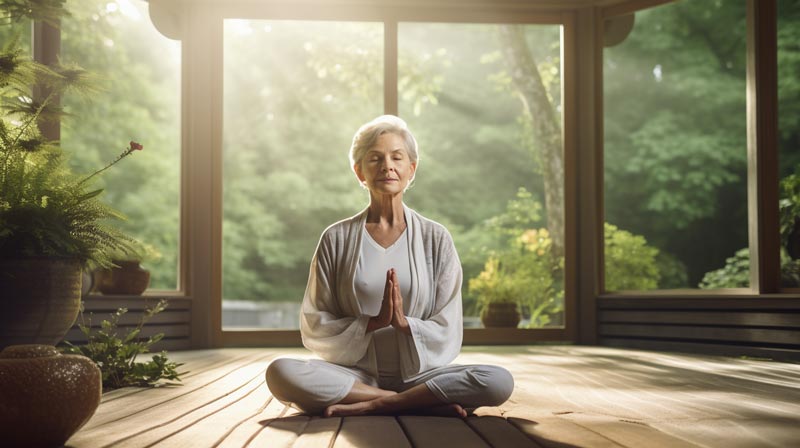
Recommended Exercises for Individuals with Ageing
Adopting an active lifestyle is vital when discussing ageing and exercise. A balanced mix of aerobic, strength, balance, and flexibility exercises can help older adults maintain health and functionality.
- Aerobic Exercises: Walking, swimming, and cycling are excellent low-impact aerobic exercises. They enhance cardiovascular health and promote stamina. Starting with light intensity, gradually increasing as tolerance builds, is recommended.
- Strength Training: Resistance exercises, such as lifting weights or using resistance bands, can counteract muscle loss due to ageing. Such training should be tailored to the individual’s current strength and stability status.
- Balance Exercises: Balance-focused activities like Tai Chi and yoga can improve stability and prevent falls, a common concern in older adults. If lacking in experience, professionals should guide these exercises, ensuring safety and effectiveness.
- Flexibility Exercises: Stretching and range-of-motion exercises help maintain joint flexibility and ease of movement. Regular gentle stretching can help keep the body supple and mobile.
Hydration is also very crucial during any form of exercise. A personalised fluid replacement strategy is necessary, with the risk of dehydration higher in older adults. The cooperation between ageing and exercise requires diverse exercise programmes, individualised to the person’s needs and abilities. A multi-faceted approach can ensure that exercise programmes are beneficial and enjoyable in the ageing process.
Safety Measures and Precautions for Exercising with Ageing
Ensuring safe and effective exercise practices is crucial in ageing and exercise. Here are some safety measures and precautions for older adults engaging in physical activity:
- Medical Clearance: Before starting any new exercise programme, it is essential to seek medical clearance, especially for those with chronic conditions or those who have been inactive.
- Gradual Progression: The exercise regimen should gradually increase with light intensity and short duration as tolerance improves. This conservative approach can help prevent injuries and other adverse events.
- Regular Monitoring: Monitoring heart rate, blood pressure, and perceived exertion during exercise is crucial. It is also essential to watch for symptoms such as dizziness, chest pain, or shortness of breath.
- Hydration: With ageing, the risk of dehydration increases. Therefore, a personalised fluid replacement strategy is essential during exercise.
- Supervised Training: Initial exercise sessions, particularly resistance training, should be managed by fitness professionals familiar with the needs of older adults.
- Medication Awareness: Older adults often take prescription medications that could alter their physiological response to exercise. Understanding these interactions is critical.
By following these safety measures and precautions, older adults can enjoy the benefits of exercise while mitigating potential risks. When undertaken responsibly, exercise can significantly contribute to healthy ageing. 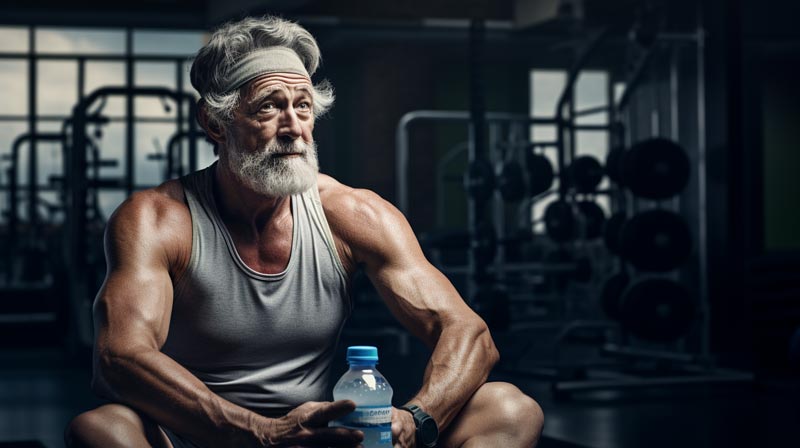
Living with Ageing and Exercise: Fitness and Lifestyle Tips
Living with ageing and exercise requires a comprehensive and adaptive approach to ensure that physical activity remains a consistent and beneficial part of one’s lifestyle. Here are some practical fitness and lifestyle tips for older adults:
- Adopt a Regular Exercise Routine: Regular exercise is vital to maintain and improve physical health as we age. Including aerobic activities, such as walking or cycling, and strength training exercises in your routine is recommended.
- Stay Hydrated: Proper hydration is crucial, especially during exercise. Older adults are more susceptible to dehydration, so drink enough fluids before, during, and after your workout.
- Monitor Medication: Keep your fitness instructor or healthcare provider informed if you are on prescription medication. Certain medications may affect your response to exercise or increase your risk of dehydration.
- Prioritise Safety: Always prioritise safety when exercising. Listen to your body, and don’t push yourself to discomfort or pain. If you experience dizziness, chest pain, or shortness of breath during exercise, stop immediately and seek medical help.
- Focus on Balance and Flexibility: Incorporate balance and flexibility exercises into your routine. They can help prevent falls, improve mobility, and improve overall fitness.
- Seek Professional Guidance: Seek the guidance of fitness professionals with experience working with older adults. They can help design an exercise programme that suits your fitness level and health status.
With the right approach and precautions, ageing and exercise can harmoniously coexist. Incorporating physical activity into your lifestyle can enhance your health, maintain your independence, and improve your quality of life as you age.
Sources
- Baker LB, Munce TA, Kenney WL. Sex differences in voluntary fluid intake by older adults during exercise. Med Sci Sports Exerc. 2005;37(5):789–96.
- Chodzko-Zajko WJ, Proctor DN, Fiatarone-Singh M, et al. American College of Sports Medicine position stand. Exercise and physical activity for older adults. Med Sci Sports Exerc. 2009;41(7):1510–30.
- El-Sharkawy AM, Sahota O, Maughan RJ, Lobo DN. The pathophysiology of fluid and electrolyte balance in the older adult surgical patient. Clin Nutr. 2014;33:6–13.
- Ferguson B. ACSM’s Guidelines for Exercise Testing and Prescription. 9th Ed. 2014. J Can Chiropr Assoc. 2014 Sep;58(3):328.
- Garber CE, Blissmer B, Deschenes MR, et al. Quantity and quality of exercise for developing and maintaining cardiorespiratory, musculoskeletal, and neuromotor fitness in apparently healthy adults: guidance for prescribing exercise. Med Sci Sports Exerc. 2011;43(7):1334–59.
- Haas R, Maloney S, Pausenberger E, et al. Clinical decision-making in exercise prescription for fall prevention. Phys Ther. 2012;92(5):666–79.
- Huang, Guoyuan & Wang, Ru & Chen, Peijie & Huang, Sunny & Donnelly, Joseph & Mehlferber, Jon. (2015). Dose-response relationship of cardiorespiratory fitness adaptation to controlled endurance training in sedentary older adults. European journal of preventive cardiology. 23.
- Kallman DA, Plato CC, Tobin JD. The role of muscle loss in the age-related decline of grip strength: cross-sectional and longitudinal perspectives. J Gerontol. 1990 May;45(3):M82-8.
- Mack GW, Weseman CA, Langhans GW, Scherzer H, Gillen CM, Nadel ER. Body fluid balance in dehydrated healthy older men: thirst and renal osmoregulation. J Appl Physiol. 1994;76:1615–23.
- Nelson ME, Rejeski WJ, Blair SN, et al. Physical activity and public health in older adults: recommendation from the American College of Sports Medicine and the American Heart Association. Circulation. 2007;116(9):1094–105.
- Qato DM, Alexander GC, Conti RM, Johnson M, Schumm P, Lindau ST. Use of prescription and over-the-counter medications and dietary supplements among older adults in the United States. JAMA. 2008;300(24):2867–78.
- Rosenberg IH. Sarcopenia: origins and clinical relevance. J Nutr. 1997;127(5 suppl):990S–1S.


